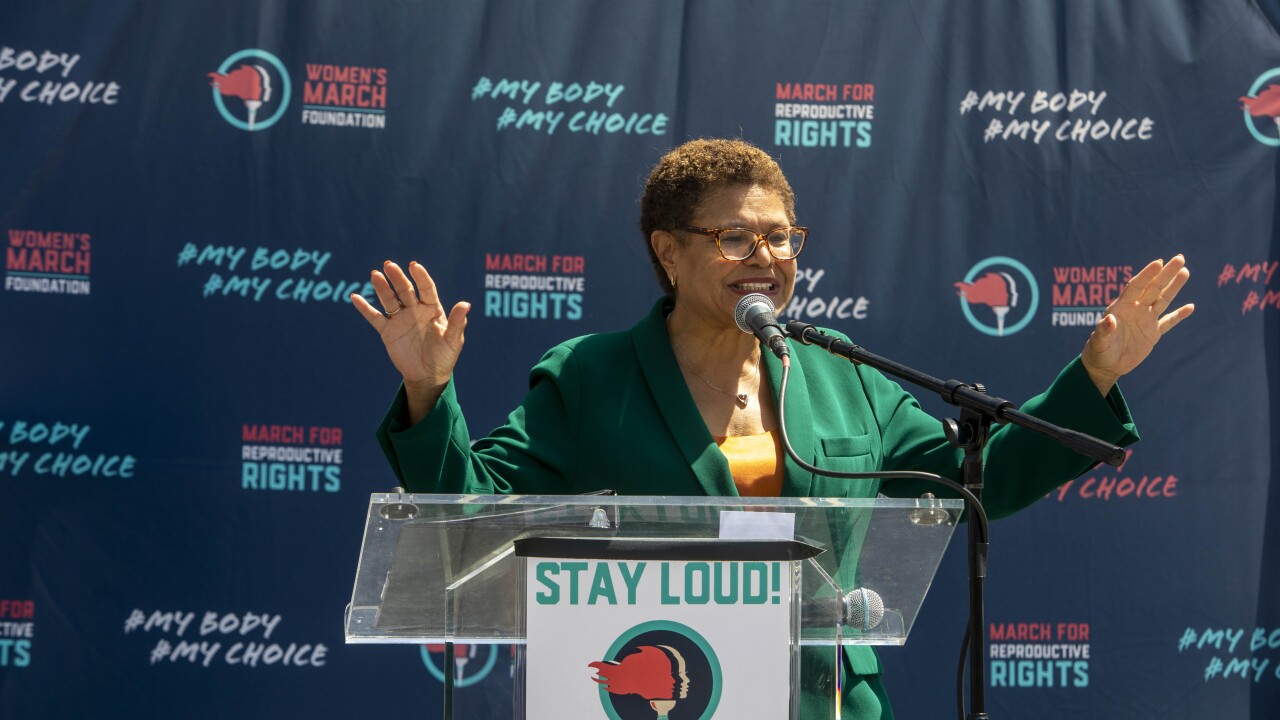
WASHINGTON – Bond Dealers of America is recommending the Treasury Department and Internal Revenue Service rework their issue price rules to state that if 25% of bonds are sold after a competitive underwriting at the initial offering price then that would establish the issue price for each maturity.
For other transactions, if 50% of the bonds underwritten were sold at the initial offering price, then that would establish the issue price for each maturity.
BDA made the recommendations in a four-page letter to John Cross, the Treasury Department's associate tax legislative counsel, and Johanna Som de Cerff, a senior technician reviewer in the IRS chief counsel's office, that tried to respond to questions raised at an Oct. 28 public hearing and in meetings.
The suggestions would differ from the issue price rules the Treasury and IRS re-proposed in June, some of which have been called unworkable by muni dealers and lawyers.
Issue price is important because it is used to help determine the yield on bonds and whether an issuer is complying with arbitrage rebate or yield restriction requirements, as well as whether federal subsidy payments for direct-pay bonds such as Build America Bonds are appropriate. Issue price also helps determine whether market participants are complying with other rules such as the 2% limit on issuance costs for private-activity bonds and limitations on the size of debt service reserve funds.
Under existing rules, the issue price of bonds that are publicly offered is generally the first price at which a substantial amount, defined as 10%, are reasonably expected to be sold to the public.
Treasury and the IRS, concerned that the 10% test does not always produce a representative price for the bonds, tried tighten those rules in 2013 by proposing new ones that would have replaced the "reasonable expectations" standard with actual sales and increased the meaning of "substantial amount" to 25%, instead of 10%, of bonds actually sold.
Those rules drew many complaints so Treasury and IRS scrapped them and proposed new rules in June that said the issue price of a maturity would generally be the first price at which 10% of the bonds were actually sold to the public. If 10% of a maturity hadn't been sold by the sale date, an alternative method could be used, under which the initial offering price of the bonds sold to the public as of the sale date would be the issue price if certain requirements were met.
The requirements included that underwriters fill all orders from the public on or before the sale date at the initial offering price and that the lead or sole underwriter certify that no underwriter filled an order from the public after the sale date and before the issue date at a higher price than the initial offering price, unless the market moved after the sale date. Underwriters would have to document any market movements justifying a higher price, such as by citing a change in a muni interest rate index.
But market participants have complained the alternative method is unworkable.
In the letter to Cross and Som de Cerff, BDA chief executive officer Mike Nicholas said if underwriters are prohibited from selling bonds at prices higher than the initial offering price under any circumstance until 10% of each maturity of the bonds are actually sold to the public, "pricing for issuers who pursue competitive and negotiated deals will likely be harmed." Dealers will likely underwrite the bonds at higher interest rates and lower prices if they have the potential to suffer losses from market movements, the letter said.
BDA also said a single index would not be sufficient to justify a market movement. "We believe that the justification and certification of high sales prices should be based on a combination of all the available market information, including an index, Treasury rate and yield curve movements, in addition to idiosyncratic market movements that may impact a state or region," Nicholas said.
"BDA believes that a 50% of total issuance actual sales approach, in addition to explicitly stating that a variety of factors, and not just an index, could be used to justify higher bond prices would combine to reduce the likelihood that the alternative rule would need to be used while making it easier to comply with it in the limited instances where utilizing it would be required," he said.
Nicholas said BDA is withdrawing its earlier recommendation that a safe harbor from issue price requirements be created if an issuer receives two bids for a competitive deal. Instead, he said, "BDA recommends an actual-sales approach for competitive deals that acknowledges that the winning underwriter is immediately at risk [for sudden market movements] and has done little or no pre-marketing of the issuance."
"For competitive deals, BDA believes that if an underwriter documents that it has publicly offered bonds at the initial offering prices and sells 25% of an overall issuance at those prices to the public, it should then be deemed sold at the issue price," he said.





